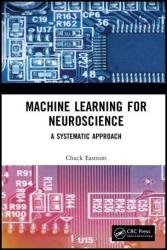 Название: Machine Learning for Neuroscience: A Systematic Approach
Название: Machine Learning for Neuroscience: A Systematic ApproachАвтор: Chuck Easttom
Издательство: CRC Press
Год: 2024
Страниц: 305
Язык: английский
Формат: pdf (true)
Размер: 16.8 MB
This book addresses the growing need for Machine Learning and data mining in neuroscience. The book offers a basic overview of the neuroscience, Machine Learning and the required math and programming necessary to develop reliable working models. The material is presented in a easy to follow user-friendly manner and is replete with fully working Machine Learning code. Machine Learning for Neuroscience: A Systematic Approach, tackles the needs of neuroscience researchers and practitioners that have very little training relevant to Machine Learning. The first section of the book provides an overview of necessary topics in order to delve into Machine Learning, including basic linear algebra and Python programming. The second section provides an overview of neuroscience and is directed to the Computer Science oriented readers.
The section covers neuroanatomy and physiology, cellular neuroscience, neurological disorders and computational neuroscience. The third section of the book then delves into how to apply Machine Learning and data mining to neuroscience and provides coverage of artificial neural networks (ANN), clustering, and anomaly detection. The book contains fully working code examples with downloadable working code. It also contains lab assignments and quizzes, making it appropriate for use as a textbook. The primary audience is neuroscience researchers who need to delve into Machine Learning, programmers assigned neuroscience related Machine Learning projects and students studying methods in computational neuroscience.
The NumPy packet is specifically for mathematical operations. It is powerful and flexible. As you can probably surmise, it is frequently used in machine learning tasks. One of the items in NumPy that is frequently used in machine learning is the array, called ndarray. This is a multidimensional array.
You are going to work a lot with TensorFlow later in this book. Much of the use of TensorFlow will make more sense once you have read the chapters regarding Machine Learning. However, it is worthwhile to introduce you to TensorFlow now. TensorFlow was first developed by the GoogleBrain team for internal use. It was released to the public in late 2015. The current version is Tensorflow 2.0. TensorFlow provides Python and C APIs. It does not guarantee backwards compatibility. There are packages for C++, Java, Go, Swift, Matlab, C#, and others. However, we will focus on Python.
Скачать Machine Learning for Neuroscience: A Systematic Approach